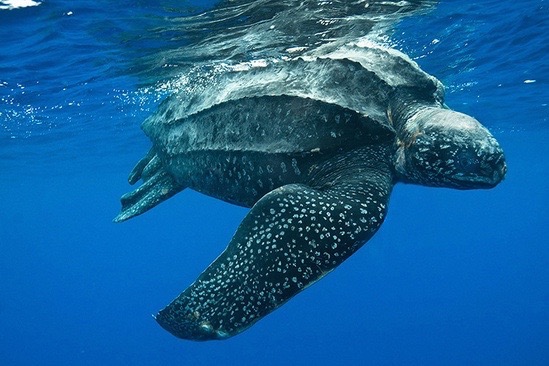Did it fall short, or go too far?
The National Marine Fisheries Service’s recently completed biological opinion (BiOp) for the Hawai‘i swordfish longline fishery would allow individual vessels to hook more endangered loggerhead and leather back sea turtles in a given year than would have been allowed under a draft opinion released months earlier.
Among the conservation measures proposed in the draft BiOp was an annual vessel limit of two leatherbacks. The measure was aimed at targeting those vessels that seemed to be hooking a disproportionately large number of turtles compared to the rest of the fleet. It also reflected the turtles’ imperiled state and declining population.
Fishery representatives claimed such a low limit would cause vessel owners to forgo targeting swordfish altogether and focus only on bigeye tuna. And scientists advising the Western Pacific Fishery Management Council argued that establishing a trip limit instead of a vessel limit would provide a better incentive for fishermen to try to avoid turtles.
The council recommended that NMFS scrap the vessel limit and instead go with a trip limit of five loggerheads and two leatherbacks.
The final BiOp decided to combine the proposed measures. If the opinion is adopted, a vessel will be allowed to take up to four leatherbacks — two takes each in two trips — before being sidelined from the swordfish fishery for the rest of the fishing year. Likewise, vessels may take up to ten loggerheads over the course of two trips.
Each time a vessel hits its trip limit, it must return to port in Honolulu for five days “while NMFS evaluates vessel and turtle interactions to identify any problems and determine if guidance can be provided to the vessel to reduce the interactions,” the opinion states.
Vessels that hit a trip limit for either species twice in one year will be subject to a vessel limit of two leatherbacks or five loggerheads for the following year.
Fleet-wide, the fisheries service stuck with its proposal to cap leatherback takes at 16, but removed the measure that would have required the fishery to shut down for the year if it had 36 loggerhead interactions, which is equal to the estimated number of annual interactions set forth in the opinion’s incidental take statement.
It’s unclear whether or not the owners of vessels that target swordfish will support the final BiOp. In March, Hawai`i Longline Association (HLA) president and former council chair Sean Martin said the vessel limits proposed in the draft BiOp were unlawful although he could accept a leatherback trip limit of three. And HLA executive director and former council policy coordinator Eric Kingma noted that even the draft BiOp determined that it was unlikely the fishery would significantly affect the leatherback population.
Kingma did not respond to a request for comment on the final BiOp by press time.
Attorneys for Earthjustice, however, were not thrilled with either the draft or the final BiOp. The firm represents the Center for Biological Diversity and Turtle Island Restoration Network, which have sued NMFS for allowing what they believe is excessive take of the rare turtles.
Attorney Leina‘ala Ley argued in an email to Environment Hawai‘i that NMFS has ignored data implicating a few vessel operators as the culprits for most of the turtle takes. “Four operators accounted for 82 percent of turtle interactions in a three-month period during winter 2017-2018,” she noted. “After having originally suggested an annual per-vessel limit of two leatherback turtle interactions and six loggerhead sea turtles, NMFS inexplicably changed course to let a few bad actors exponentially increase the number of interactions between turtles and the shallow-set longline fishery,” she wrote.
On August 8, via web conference, the council was scheduled to vote on whether it would stick with its March recommendations or accept NMFS’s tweaks. It will also make a recommendation on whether or not to set a hard interaction limit for loggerheads at 36.


Leave a Reply